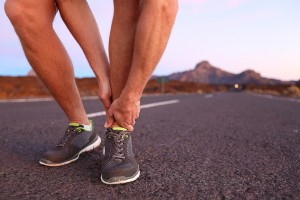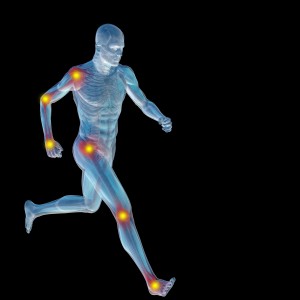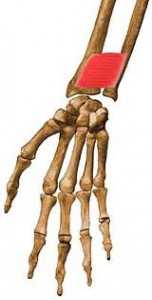The US open of Tennis is about to start. As world number 1, Novak Djokovic, takes the court one of the great stories in sports will be told again and again. If you are unfamiliar with his story, here it is. Up to 2011 Djokovic was an excellent player, yet he was not considered to be one of the elite tennis stars. Why was this? After all, he won the Australian Open in 2008. Although he was obviously very skilled in every aspect of the game, he had a habit of collapsing in the heat and during long extended matches. Djokovic would blame it on asthma and seasonal allergies. He appeared out of shape to most of his opponents and even television announcers. This accusation was despite Djokovic’s regimented training schedule, which consumed most of his waking hours. Then in 2011 he won 3 Grand Slam tournaments, 10 Titles, and 43 consecutive matches on his way to becoming the world’s number 1 tennis player. He was so dominant that year there are few achievements in the history of sports that can even compare. What does he credit this dramatic turn around to? Are you ready for this? It’s so simple yet so epic. He changed his diet! He simply stopped eating gluten, dairy and reduced his sugar significantly. How did he know what dietary changes he needed to make? Someone used muscle testing on him to figure it out! When his body no longer had to fight through the inflammation created by consuming these foods, he was able to maintain his skills even during the longest matches. The tennis world did not see him coming.
Djokovic’s story is like many others I know. Maybe they do not become the world number one in tennis, but their lives are changed for the better in major ways when they give up foods their bodies are reacting to. Often their chronic symptoms go away and other problems go away as well-the ones they don’t tell me about. Patients often ask why and how did this happen? They say, “I used to be able to eat those foods without any trouble. Why can’t I now?” The answer can often be found in their patient history. I ask, “What was happening in your life around the time that this started?” It usually takes a moment or two of reflection before they say something like, ”I was going through a divorce,” “I was taking care of my terminally ill father,” “My child was in the hospital,” “I was working long hours at a job I hated,” or “I had just had my 3rd baby in 3 years.” You get the idea. A significant life event generally precedes the onset of their chronic symptoms. There is almost always a timeline that fits.
Stress is insidious and it destroys your body slowly. People think they are thriving on stress, but that is never the case. When they think they are ”thriving” they are really adapting. The body will eventually run out of reserves and can no longer adapt. When it does, the person has a health crisis that was sometimes years in the making. Hans Selye, in his classic book The Stress of Life, found that stress causes intestinal ulcers, suppresses the immune system, and increases the size of the adrenal glands (reason you can adapt to stress at all). We know that the cells that line the intestine are connected with something called tight junctions. Tight junctions function to keep out undigested food particles, toxins and microorganisms that naturally live in our gut. Under stress the tight junctions can start to break down allowing food, toxins and microorganisms to cross the intestinal lining. This can happen even before the classic ulcer is present. These cracks in the intestinal linings make the immune system go crazy. The immune system begins to fight this steady stream of invaders. When you have a cold or flu some of the symptoms of fatigue, headache, achiness are simply due to your body’s immune system working so hard. Mobilizing the immune system requires tremendous energy. This is some of why when you are sick you feel so bad. Symptoms are reasonable for the 1-2 weeks a cold might last, but what if you felt like that all the time. Many people do feel like that all the time, and it often it comes from their immune system battling their leaky gut.
Whole books are devoted to the subject of leaky gut, but here are some of the basics that answer our question of “How did this start?” Something causes a disturbance in the gut such as prolonged stress, poor diet, excessive alcohol, antibiotics, toxic chemical exposure, or pathogenic organisms like bacteria or yeasts. The lining of the intestines becomes compromised affecting the immune system as well as the cells that line your intestine directly. These cells called enterocytes, and their finger like projections called microvilli, are where digestion and absorption occurs. Depending on the level of damage to the intestinal lining different enzymes will no longer be produced or work effectively. It could be enzymes specific to lactose (a type of sugar many people cannot digest), dairy protein, gluten, other wheat proteins or starches to name a few. If this goes on for long periods of time the immune system begins to attack more and more strongly. If it goes on long enough, the body can even begin to attack itself. You are one of these people if you have an auto immune disorder, joint pain, thyroid problem, skin problem or any other body issue that goes away when you take specific foods out of your diet. I have seen it time and again as I work with patients to try and reverse this damage to the gut.
Why did the detrimental affects of intestinal damage start with tennis star Novak Djokovic? I am going to speculate wildly here. A patient of mine gave me a book that Djokovic wrote, Serve to Win, where he tells his tennis story and talks about how important diet is to athletic performance. There is a chapter early in the book that talks about a part of his childhood that was horrific. No child should have to endure such trauma. Djokovic grew up in Belgrade, Serbia during the War of Kosovo. He recounts a time when he was running to a bomb shelter when he tripped and was separated from his family in the darkness. When he was on the ground he looked up to see 2 laser-guided bombs blow up a building in front of him. For 78 nights at 8pm, the siren would blow and they would head for the bomb shelter as the city was bombed. “The feeling of helplessness dominated our lives,” he said. One of the worst forms of stress is feeling like you will not be able to control the situation you are in. Imagine that level of stress on a child. Not knowing day to day if he would see his family again. I think this stressful time period in his life may have started the cascade of events that led eventually to his inability to digest gluten and dairy. Of course, there easily could have been other factors involved over the years as well. There could have been compounding events such as the stress of being bombed and taking a round of antibiotics, which could create an imbalance of bacteria in the intestines; both acting together to result in intestinal damage. I do not know for sure, but I bet the start of Djokovic’s problems could be linked to the time after living through airstikes.
If you have chronic health issues think back to when it all started. What was happening in your life before the symptoms began? Using applied kinesiology and muscle testing we can quickly determine if the health problems you may be experiencing are related to your intestines. Knowing if you have to avoid a certain food makes your life easier and healthier. Using targeted herbs, supplements and lifestyle modification we often restore intestinal balance, which reduces he number of foods one needs to avoid. It is worth the effort of changing your diet because often it is the only way you will recover your health.





